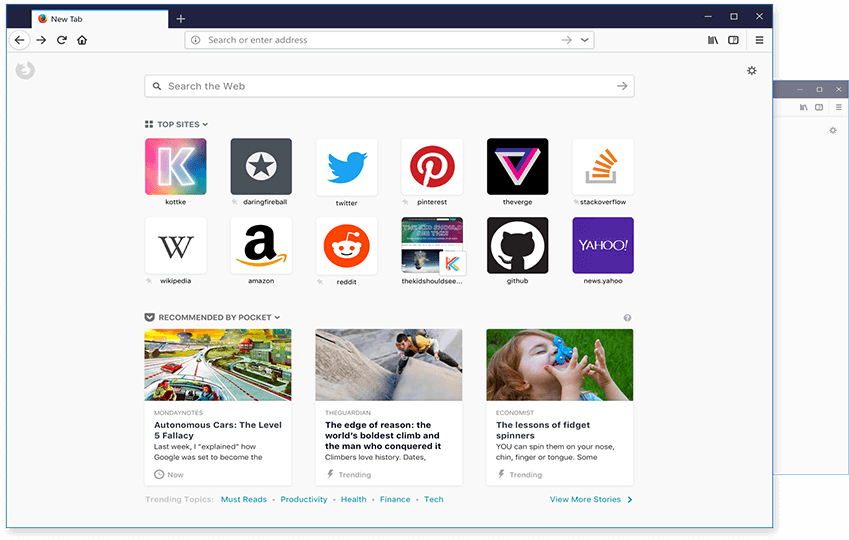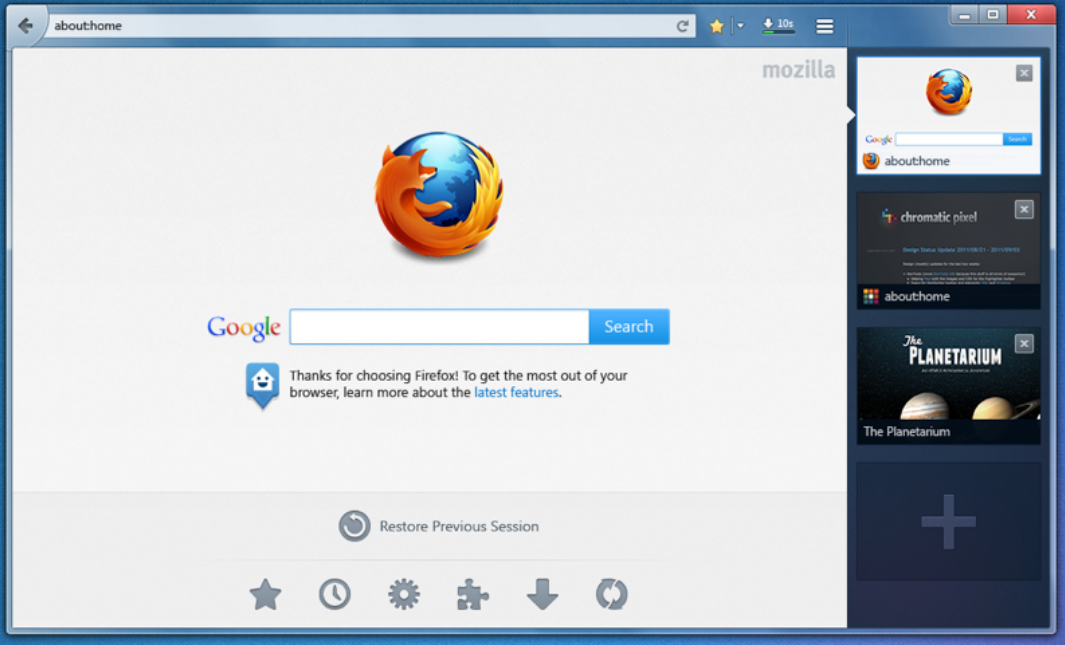
The explosion in popularity of the Web was triggered in September 1993 by NCSA Mosaic, a graphical browser which eventually ran on several popular office and home computers. Today, the major web browsers are Chrome, Safari, Internet Explorer, Firefox, Opera, and Edge. Many others were soon developed, with Marc Andreessen's 1993 Mosaic (later Netscape), being particularly easy to use and install, and often credited with sparking the internet boom of the 1990s. Precursors to the web browser emerged in the form of hyperlinked applications during the mid and late 1980s, and following these, Tim Berners-Lee is credited with developing, in 1990, both the first web server, and the first web browser, called WorldWideWeb (no spaces) and later renamed Nexus.
#First tab browser software#
Hyperlinks present in resources enable users easily to navigate their browsers to related resources.Ī web browser can also be defined as an application software or program designed to enable users to access, retrieve and view documents and other resources on the Internet. This may be a web page, image, video, or other piece of content. The method of accessing a particular page or content is achieved by entering its address, known as a Uniform Resource Identifier or URI. It further provides for the capture or input of information which may be returned to the presenting system, then stored or processed as necessary. Provides an accessible name for the tab panel.For the "history" feature found in most web browsers, see Web browsing history.Ī web browser is a software application for retrieving, presenting and traversing information resources on the World Wide Web.Refers to the tab element that controls the panel. Is hidden unless its associated tab control is activated. Indicates the element serves as a container for tab panel content.Refers to the tabpanel element associated with the tab. This approach to managing focus is described in the section on roving tabindex.Since an HTML button element is used for the tab, it is not necessary to set tabindex="0" on the selected (active) tab element.Set when a tab is not selected so that only the selected (active) tab is in the page Tab sequence.Removes the element from the page Tab sequence.Set for all tab elements in the tab set except the active tab the one associated with the currently displayed panel.Indicates the tab control is not active and its associated panel is NOT Does not change when focus moves in the tablist.Indicates the tab control is activated and its associated panel is displayed.

Provides a title for its associated tabpanel.

To ensure people who rely on browser or operating system high contrast settings can both distinguish the active (selected) tab from other tabs and perceive keyboard focus:.


 0 kommentar(er)
0 kommentar(er)
